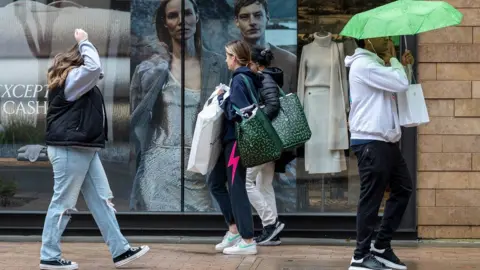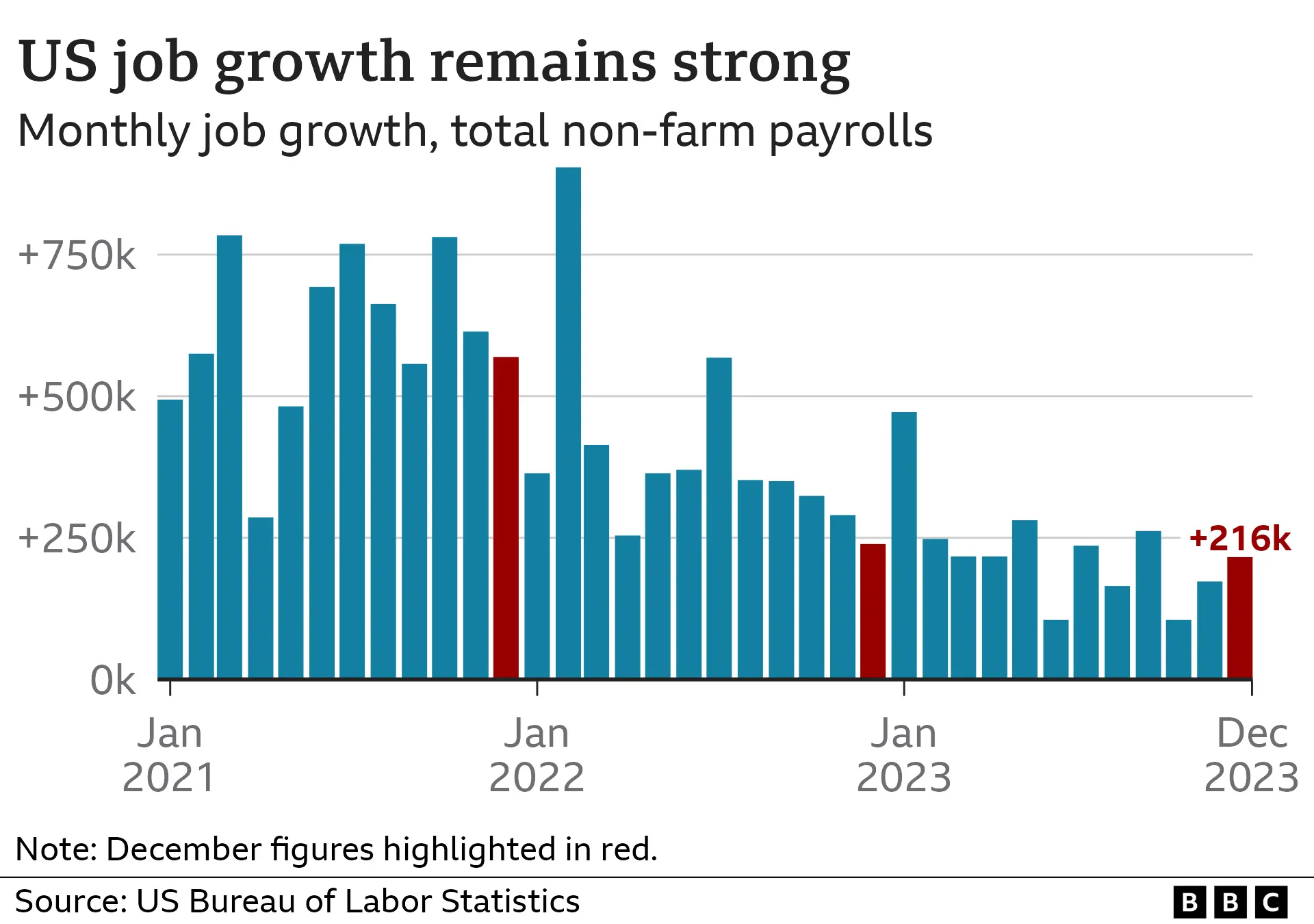Strong US jobs growth dampens talk of rate cuts
 Getty Images
Getty ImagesHiring in the US was unexpectedly strong last month, as the American economy continued to defy forecasts of a slowdown.
Employers added 216,000 jobs and the unemployment rate was unchanged at 3.7%, the Labor Department said.
Government hiring drove the gains, which extended one of the strongest streaks of job creation on record.
The growth has confounded forecasters expecting job losses as higher borrowing costs slowed the economy.
But it has raised hopes that the US central bank will be able to get a grip on inflation, the rate at which prices rise, without triggering a painful downturn.
All told, the US added 2.7 million jobs last year, slowing after the boom of 4.8 million in 2022 and 6.4 million in 2021, but a faster pace than pre-pandemic years.
Pay showed signs of rising, with average hourly earnings in December up 4.1% from a year earlier.
Analysts said the signs of strength in the report should dampen speculation that the Federal Reserve will need to reverse course quickly and start cutting interest rates to shield the economy from damage.
"Jobs growth remains as resilient as ever, validating growing scepticism that the economy will be ready for policy rate cuts as early as March," Seema Shah, chief global strategist at Principal Asset Management, said.
"Indeed, the recent run of labour market data generally point in one direction: strength."

President Joe Biden, who has struggled to convince voters that an economy can be strong while slowing, cheered the figures in a statement that also pointed to slowing price inflation.
The most recent report showed consumer prices rose 3.1% in November from a year earlier.
"This morning's report confirms that 2023 was a great year for American workers," he said, adding: "I won't stop fighting for American workers and American families. I know that some prices are still too high for too many Americans."
Some analysts warned that weakness in the private sector pointed to lurking problems.
There was limited growth in sectors such as retail, financial activities and leisure and hospitality, which includes bars, restaurants and the arts, and has yet to recover to pre-pandemic employment levels.
The number of jobs in transportation and warehousing, which boomed during the pandemic, fell, while the Labor Department also said job growth in November and October was lower than previously estimated.
"The impact of the new revisions published today is that the trend in private payroll growth continues to slow relentlessly," Ian Shepherdson of Pantheon Macroeconomics said.
